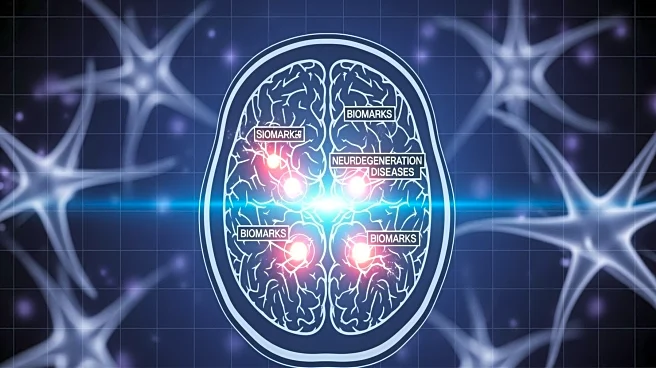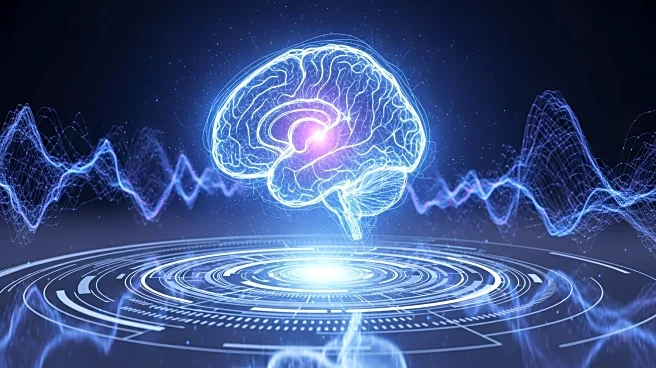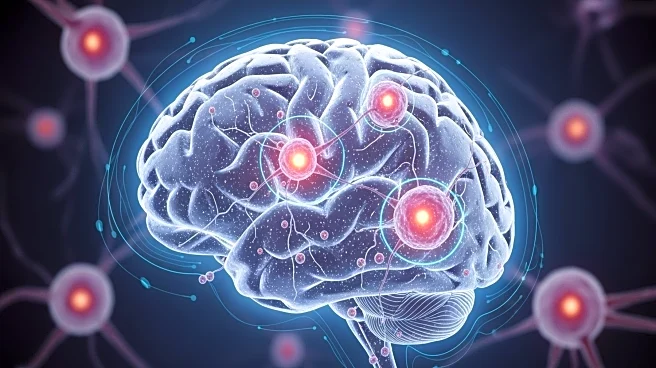What's Happening?
An international team of scientists, led by the Max Planck Institute for Human Cognitive and Brain Sciences, has discovered a method to track Parkinson's disease symptoms by analyzing brain-wave activity.
The study involved pooling electrophysiological data from 119 Parkinson's patients to identify patterns in brain-wave activity that correlate with symptom severity. This research focuses on the basal ganglia, a brain region crucial for motor control, which is affected in Parkinson's disease. The team found that specific beta-wave activity in the basal ganglia could be linked to the disease's impact on movement, offering a potential avenue for more precise stimulation therapies.
Why It's Important?
This discovery is significant as it could lead to improved treatment options for Parkinson's disease, which affects millions worldwide. By identifying specific brain-wave patterns associated with symptom severity, researchers can potentially develop therapies that dynamically respond to these patterns, enhancing motor control in patients. This approach could refine deep brain stimulation techniques, offering a more tailored and effective treatment. The ability to track and respond to brain-wave activity in real-time could revolutionize how Parkinson's disease is managed, providing hope for better quality of life for those affected.
What's Next?
The research opens the door for further studies to refine the understanding of brain-wave patterns in Parkinson's disease. Future work may focus on developing technology that can monitor these signals in real-time and adjust stimulation therapies accordingly. Clinical trials could be conducted to test the efficacy of these new treatment methods, potentially leading to widespread adoption in medical practice. Researchers may also explore the application of this technique to other neurological disorders, broadening its impact.
Beyond the Headlines
The study highlights the importance of interdisciplinary collaboration in advancing medical research. By combining datasets from various sources, the team was able to overcome previous limitations in understanding brain-wave activity. This approach underscores the potential of data pooling and advanced analytics in uncovering new insights into complex diseases. Additionally, the research may prompt ethical discussions about the use of invasive techniques like deep brain stimulation, balancing potential benefits with risks.











